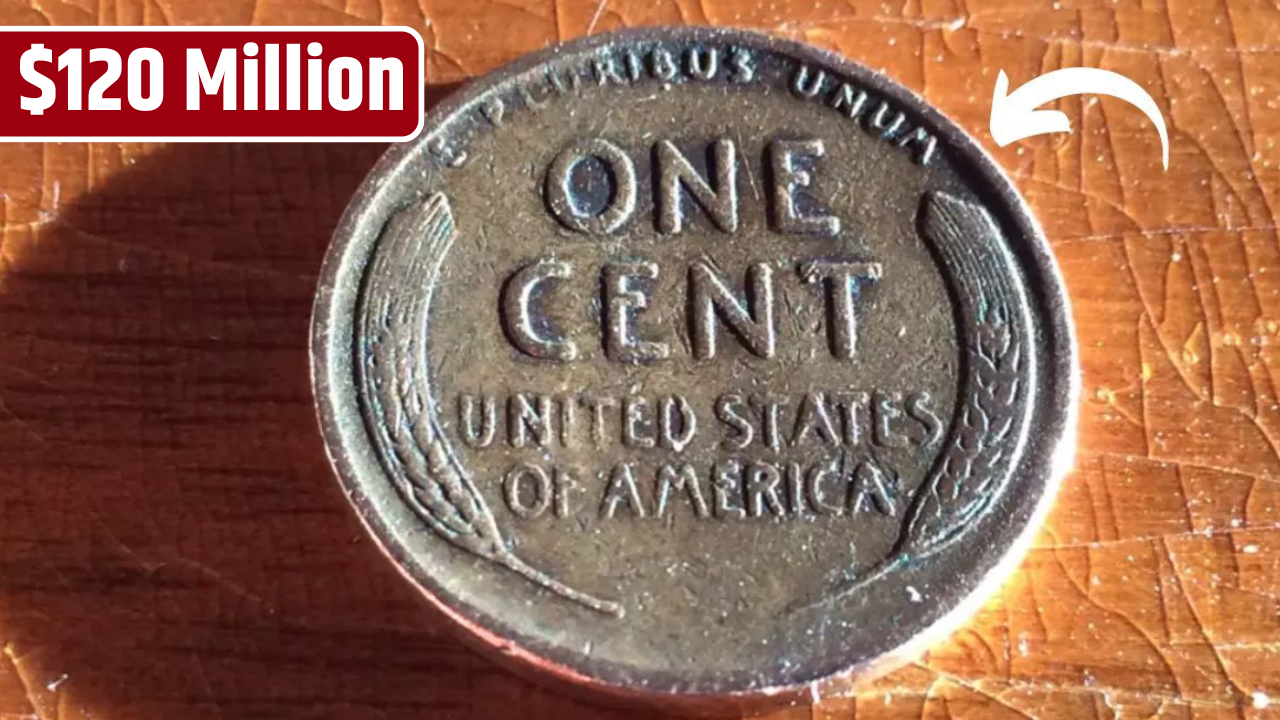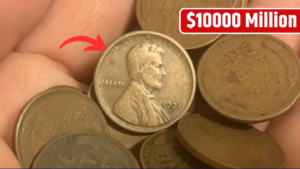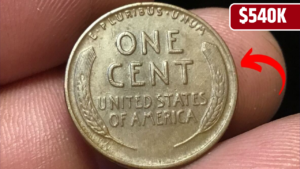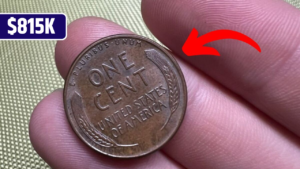In the world of rare coins, few stories capture the imagination like the legend of the 1943-D Lincoln Wheat Penny struck in copper. At a jaw-dropping valuation of $120 million, this coin isn’t just pocket change—it’s a symbol of how history, human error, and scarcity can elevate an everyday object into one of the most valuable collectibles on the planet.
Let’s dive into how a simple penny became a multimillion-dollar marvel, and what makes it so legendary in the numismatic community.
The Birth of the Lincoln Wheat Penny
When the U.S. Mint introduced the Lincoln Wheat Penny in 1909, it marked a milestone in American coinage. Abraham Lincoln was the first real person to appear on a U.S. circulating coin, replacing the allegorical depictions of Liberty that had dominated designs until then.
Crafted by sculptor Victor David Brenner to commemorate Lincoln’s 100th birthday, the obverse features a right-facing portrait of the president, while the reverse shows two stylized wheat stalks symbolizing agricultural prosperity. This design remained in use until 1958, when it was replaced by the Lincoln Memorial version.
Wartime Necessity and the 1943 Steel Pennies
The year 1943 brought an unprecedented change to U.S. coin production due to World War II. Copper, a crucial material for ammunition and wartime manufacturing, was redirected to the war effort. As a result, the U.S. Mint produced pennies using zinc-coated steel, creating a silvery appearance that stood out from traditional copper coins.
These “steel cents” were produced at all three mints—Philadelphia, Denver, and San Francisco—and are relatively common today. But amidst this switch, a few copper blanks from 1942 slipped through the cracks.
The Rare Error: The 1943-D Copper Penny
At the Denver Mint, a few leftover copper planchets—blank discs intended for earlier coinage—were mistakenly fed into the coin presses during 1943. These copper blanks were struck using 1943 dies, producing pennies that were never meant to exist.
Only a handful of these 1943-D copper pennies are known to exist, making them one of the rarest errors in U.S. coinage history. One specimen in nearly flawless condition has reportedly changed hands in a private sale for as much as $120 million, setting a new high watermark in the coin world.
Why Is It Worth So Much?
The staggering value of the 1943-D copper penny comes from a combination of several powerful factors:
| Factor | Description |
|---|---|
| Extreme Rarity | Only a few genuine examples exist, especially from the Denver Mint. |
| Historical Context | Tied to World War II and America’s industrial shift. |
| Mint Error | A unique mistake involving obsolete materials and updated dies. |
| Condition | The $120 million coin is in nearly perfect, uncirculated state. |
| Demand Among Collectors | Legendary status fuels fierce competition among elite collectors and investors. |
How to Spot a Genuine 1943 Copper Penny
If you think you’ve found a 1943 copper penny, it’s essential to verify its authenticity. Here are key features to check:
- Magnet Test: Genuine copper pennies are not magnetic, while steel ones will stick to a magnet.
- Mintmark: Look for a tiny “D” under the date, indicating the Denver Mint.
- Weight: Copper pennies weigh about 3.11 grams, compared to 2.7 grams for steel ones.
- Color and Texture: Copper has a warm brown or reddish tone. Be wary of steel pennies that have been copper-plated.
- Date Integrity: Check the date closely—some fakes are 1948 pennies with the “8” altered to resemble a “3.”
Due to the high stakes, professional authentication by services like PCGS or NGC is strongly recommended.
Could There Be More Out There?
One of the most exciting aspects of this story is the idea that more of these copper 1943-D pennies might still be tucked away in drawers, jars, or old collections. While the odds are slim, finds do occasionally surface, keeping hope alive among treasure-hunting hobbyists.
Even beyond this coin, the Lincoln Wheat series has several valuable rarities—including the 1909-S VDB and the 1914-D—that can fetch thousands, making it a favorite for new and veteran collectors alike.
The story of the $120 million Lincoln Wheat Penny is more than just a tale of a rare coin—it’s a testament to how history, error, and intrigue can elevate something as mundane as a penny into a symbol of immense value. Whether you’re a seasoned collector or just someone curious about what’s jingling in your pocket, the world of coins still holds surprises—and perhaps, a hidden treasure.
FAQs
How many 1943-D copper pennies exist?
Experts estimate only 1–3 verified examples are known from the Denver Mint.
Can I find one in circulation today?
It’s extremely unlikely, but rare coins occasionally turn up in old jars or inherited collections.
Are all 1943 pennies valuable?
Most 1943 pennies are made of steel and are only worth a few cents to a few dollars. Only copper ones are valuable.
What’s the best way to check if my penny is real copper?
Start with a magnet test. If it’s not magnetic and the date is correct, get it professionally evaluated.
How can I sell a valuable penny?
Work with a reputable numismatic dealer or auction house for authentication and sale.








